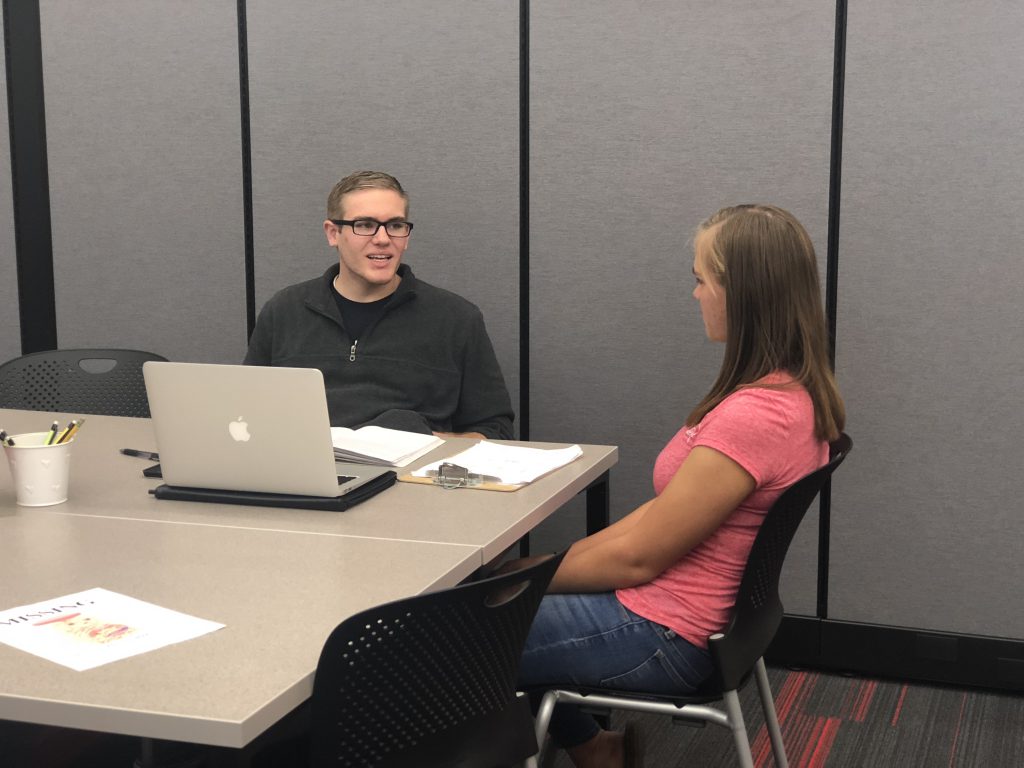Beyond the runway, the Fashion Club is fighting for a sustainable future by spreading awareness on ways students can build an eco-friendly, stylish wardrobe.
Aubrey Richardson, a freshman biology major from Louisville, Kentucky, decided to start the club with her friends at the beginning of this school year. She is now serving as the club’s president.
“We wanted to make a space where people can come and learn how to express their style through their clothing in ways you might not have thought of before,” Richardson said.
Whether it’s thrifting, upcycling, supporting eco-friendly brands or recycling clothes, the Fashion Club aims to teach students how to shop sustainably. Their activities are based on finding fun ways to spread that message.
For the club’s first meeting, members took an old puzzle with half of its pieces missing and turned what was left into new earrings. Their goal was to show how recycling waste into a wardrobe can be fun and easy.
The club held a fashion show Feb. 5 using thrifted, recycled and handed-down materials. Models sported a variety of looks, from eccentric dresses made of rope and plastic to casual thrifted outfits that any student could wear to class.
“We wanted to show variety,” Richardson said. “You can thrift things for summer and winter, fancy and comfortable. You can find all of it in a thrift store.”
Richardson was in charge of the “Trashion Show,” a portion of the event featuring models wearing outfits made entirely of trash. It was aimed at spreading awareness of fast fashion’s negative impact on the climate and environment.
“Fast fashion” is a term used to describe fashion business models that rely on cheap and speedy production of low-quality clothing. It typically feeds into popular trends that quickly run out of style. Most fast fashion companies are based in countries with little environmental regulation and fewer worker protections.
According to a report from the Princeton Student Climate Initiative, fast fashion impacts the environment in three major ways: excessive water usage, the spread of plastic microfibers and mass consumption of clothing. The fast fashion industry and its related companies remain one of the largest contributors to climate change.
Olive Wood, a freshman biology major from Poulsbo, Washington, was a model in the show and wore a pink dress made out of plastic.

“I was really nervous at first,” Wood said. “But it was really fun and rewarding to be a part of a project that our club had been working on for a while.”
The idea for the fashion show came from Emily Ashton, a freshman English major from Eugene, Oregon, and the vice president of the club. Ashton came up with the idea for her environmental humanities midterm, which asked students to create a proposal for ways to promote sustainability on campus.
“Overproduction is a huge issue for our climate, and the fast-fashion industry is a major part of that,” Ashton said. “But our message is to not just shop sustainably, it’s to embrace your style and what you like to wear sustainably.”
Aside from educating others on how to dress sustainably, the Fashion Club was created to be a space where people can express themselves through their wardrobe.
“Fashion is not just for girls or a certain political group,” Ashton said. “We want to create a safe and comfortable community where we can enjoy ourselves and others.”
As the club continues to expand, they are hoping to meet more frequently and hold more events. Students can find meeting information on the Fashion Club’s Instagram page.
“It’s a space where people can come and work on looking their best self and feel confident in what they’re wearing,” Richardson said.
For students in the Fashion Club, wardrobe is a tool used both in the art of expression and the fight against the industry’s negative impact on the environment. Although still growing, students in the club are making an impact by implementing sustainability one outfit at a time.




